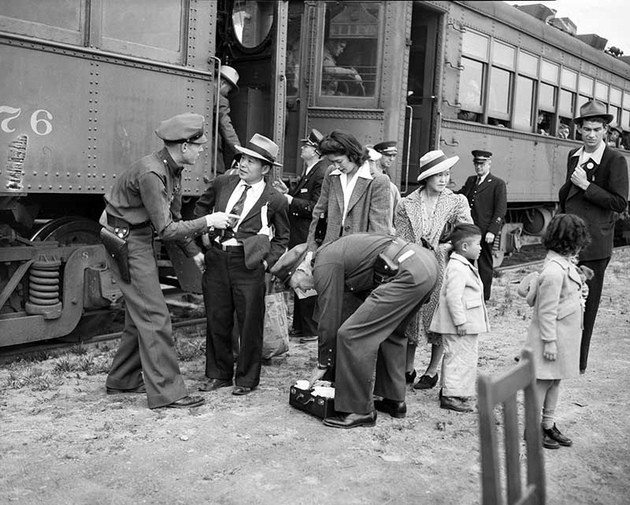
Seventy years ago, on Dec. 17, 1945, the U.S. War Department rescinded a federal order that uprooted Japanese residents and citizens of Japanese-American descent from their homes and forced them into internment camps. For many, their homes and businesses were gone.
About four years earlier, on Feb. 19, 1942 — two months after the Pearl Harbor attack — President Franklin Delano Roosevelt issued Executive Order 9066, which allowed military commanders to designate areas from which people could be excluded. Almost all of the West Coast was so deemed.
Long before Pearl Harbor’s destruction, Japanese immigrants and Japanese Americans were viewed suspiciously in California. For decades, laws about land ownership, business licenses and immigration targeted the community. In 1939, some officials charged that local fishing boats were surveilling U.S. ports as Japanese Navy spies. In Southern California, arrests took place hours after FDR’s order in the Japanese village at San Pedro’s Terminal Island. Japanese American fishermen — children of immigrants and thus U.S. citizens — were prohibited from sailing. Six days later, all civilians in the area were given 48 hours to evacuate. In a few months, about 122,000 people, about 70,000 of them U.S. citizens, were incarcerated.
In California, about 29,000 men, women and children were transported to remote camps in Tule Lake and Manzanar without charges or right of appeal. Terminal Island was completely bulldozed by the Navy.
Edward Whelan, S.J., president of Loyola University during World War II, had befriended and worked with Japanese Americans in previous assignments. In June 1944, he wrote a letter to America magazine railing against “concentration camps” and the government’s violation of constitutional rights. Months later, he penned an article for the magazine decrying the internment policy: “… whenever and wherever the Constitutional guarantees are violated in the treatment of a minority the structure of American government is threatened.”
The late Michael Kotlanger, S.J., M.A. ’72, archivist at the University of San Francisco, Michael Engh, S.J., ’72, a historian and president of Santa Clara University, and Nathaniel Kaufman ’07 have researched Whelan’s wartime actions. Whelan hired and housed on the Loyola campus as many as 75 returning internees, who worked as custodians, groundskeepers, cooks and waiters. He also renovated the basement of St. Robert’s Hall as a dormitory. He even had the basement of his residence “de-cloistered,” which enabled a married couple to live there after returning from a camp. Whelan allowed returnees to save money and rebuild businesses and lives. Some remained part of the campus community for decades.
In a letter to his Jesuit provincial shortly after his America article appeared, Whelan wrote, “… we often preach a great deal about interracial justice, and proceed to do nothing.” Whelan did something. And more.
This article appeared in the winter 2015 issue (Vol. 6, No. 1) of LMU Magazine.
